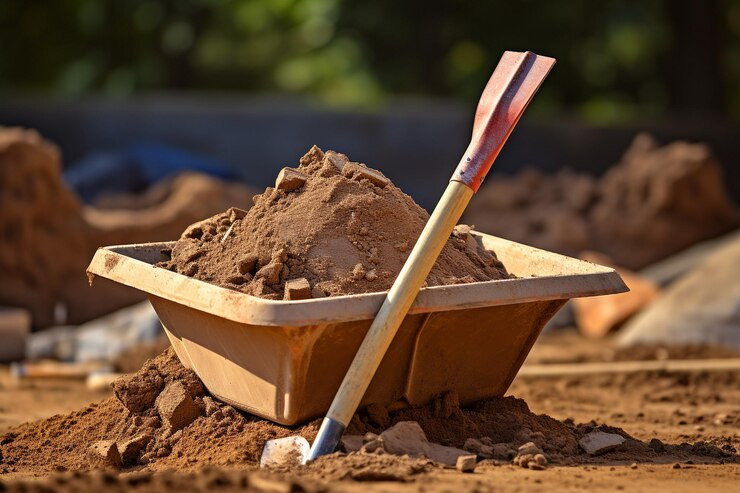Key Materials for Construction and Landscaping: Sand Clay, Fill Sand, and Slag
Florence, United States - June 12, 2024 / LH Stokes /
Understanding the Different Types of Fill Materials
When it comes to construction and landscaping, choosing the right fill materials is crucial. The materials you use can impact the stability, drainage, and overall success of your project. Three essential fill materials that you should be familiar with are sand clay, fill sand, and slag. Each of these materials has unique properties and applications that make them suitable for various purposes.
Applications of Sand Clay in Construction
Sand clay is a mixture of sand and clay that creates a versatile fill material. It is commonly used in construction projects due to its excellent compaction properties. When properly compacted, sand clay provides a stable base for foundations, roadways, and other structures.
The Benefits of Using Slag in Landscaping
Slag, a byproduct of metal smelting, is increasingly used in landscaping due to its durability and environmental benefits. It is a sustainable alternative to natural aggregates and provides excellent drainage, making it ideal for use in garden beds, walkways, and driveways.
Why Choose Sand Clay?
Sand clay is a preferred choice in many construction projects because of its ability to create a stable and durable base. It is particularly effective in areas with poor soil quality, as it can improve the soil's load-bearing capacity. Additionally, sand clay is cost-effective and readily available, making it an attractive option for large-scale projects.
Fill Sand: The Go-To Material for Versatile Applications
Fill sand is another essential material used in construction and landscaping. It is composed of fine particles that allow for easy compaction and excellent drainage. Fill sand is commonly used as a base for concrete, as backfill for retaining walls, and in other applications where stability and drainage are important.
The Versatility of Slag in Landscaping
Slag is a highly versatile material that offers numerous benefits for landscaping projects. Its angular shape and rough texture provide excellent traction, making it suitable for use in pathways and driveways. Additionally, slag's high density helps to reduce weed growth, making it an excellent choice for garden beds and other areas where weed control is desired.
Improving Soil Stability with Sand Clay
One of the primary benefits of using sand clay in construction is its ability to improve soil stability. The clay particles in sand clay bind together, creating a dense and cohesive material that resists movement and erosion. This makes it an ideal choice for constructing foundations, roadways, and other structures that require a stable base.
Environmental Benefits of Using Slag
Using slag in landscaping projects offers several environmental benefits. As a byproduct of metal smelting, slag helps to reduce waste and conserve natural resources. Additionally, slag's porous nature allows for excellent water drainage, which can help prevent soil erosion and improve water management in landscaped areas.
Cost-Effective Solutions with Fill Sand
Fill sand is an economical choice for many construction and landscaping projects. Its affordability and availability make it a practical option for large-scale applications. Whether you are building a new home, creating a garden, or constructing a roadway, fill sand provides a cost-effective solution that meets your needs.
Enhancing Drainage with Sand Clay
Sand clay is known for its excellent drainage properties. The sand particles create a porous structure that allows water to flow through easily, reducing the risk of waterlogging and erosion. This makes sand clay an ideal material for use in areas prone to heavy rainfall or where effective drainage is essential.
Slag: A Sustainable Choice for Landscaping
Choosing slag for your landscaping projects is a sustainable decision. By using a byproduct of metal smelting, you are helping to reduce industrial waste and promote environmental sustainability. Additionally, slag's durability and low maintenance requirements make it a long-lasting and eco-friendly choice for various landscaping applications.
Using Fill Sand for Backfilling
Fill sand is often used as backfill material in construction projects. Its fine particles allow it to be easily compacted, providing a stable and supportive base for retaining walls, foundations, and other structures. Fill sand's excellent drainage properties also help to prevent water accumulation and associated damage.
Creating Durable Pathways with Slag
Slag is an excellent material for creating durable and attractive pathways. Its rough texture and angular shape provide excellent traction, making it safe and easy to walk on. Additionally, slag's high density helps to prevent weed growth, reducing the need for maintenance and ensuring a long-lasting pathway.
Choosing the Right Material for Your Project
When selecting fill materials for your construction or landscaping project, it is important to consider the specific requirements of your project. Sand clay, fill sand, and slag each offer unique benefits and are suitable for different applications. By understanding the properties and advantages of each material, you can make an informed decision that ensures the success of your project.
Conclusion
In summary, sand clay, fill sand, and slag are essential materials for construction and landscaping. Each material offers unique properties and benefits that make it suitable for various applications. Whether you are looking to improve soil stability, enhance drainage, or create durable pathways, these materials provide cost-effective and environmentally friendly solutions. By choosing the right fill material for your project, you can ensure a successful and sustainable outcome.
FAQs
What is sand clay used for in construction? Sand clay is commonly used to create a stable base for foundations, roadways, and other structures due to its excellent compaction properties.
How does filled sand improve drainage? Fill sand's fine particles create a porous structure that allows water to flow through easily, reducing the risk of waterlogging and erosion.
What are the environmental benefits of using slag? Using slag helps to reduce industrial waste and conserve natural resources. Its porous nature also improves water drainage, preventing soil erosion.
Can slag be used for pathways and driveways? Yes, slag's angular shape and rough texture provide excellent traction, making it suitable for use in pathways and driveways.
Why is sand clay a cost-effective choice for construction? Sand clay is readily available and affordable, making it an attractive option for large-scale construction projects. Its ability to improve soil stability also adds to its cost-effectiveness.

Contact Information:
LH Stokes
1013 Chase St
Florence, SC 29501
United States
Karen Shumpert
(843) 662-4701
https://lhstokes.com/
Original Source: https://lhstokes.com/media-room/#/media-room


